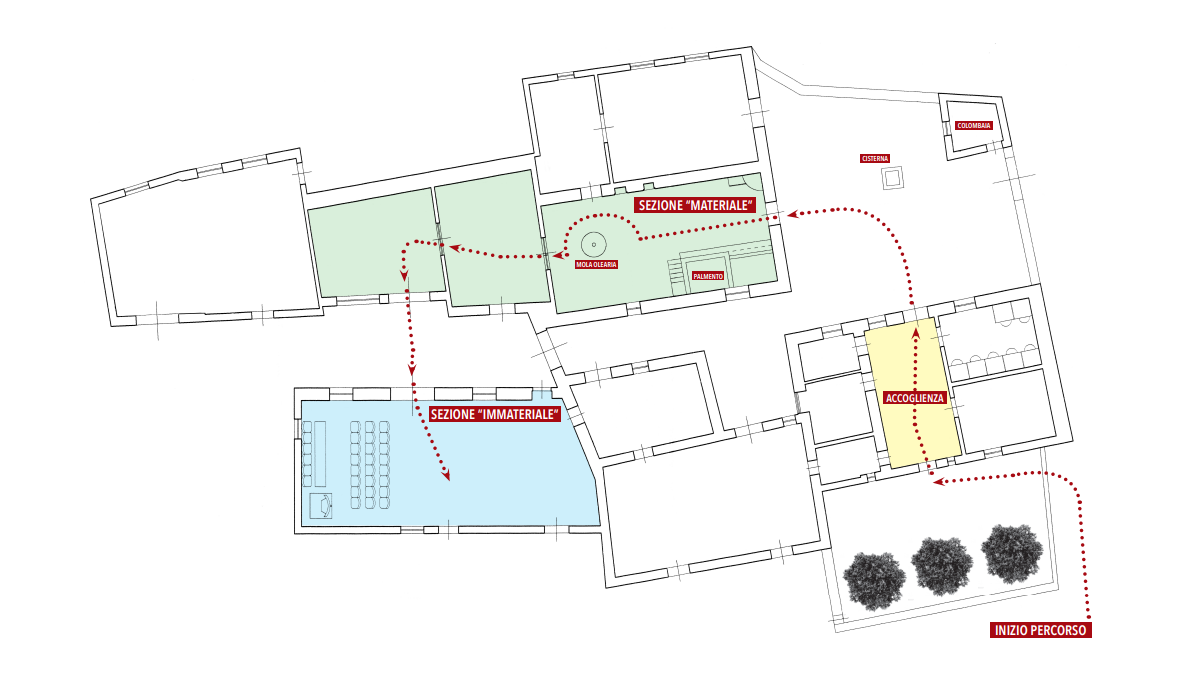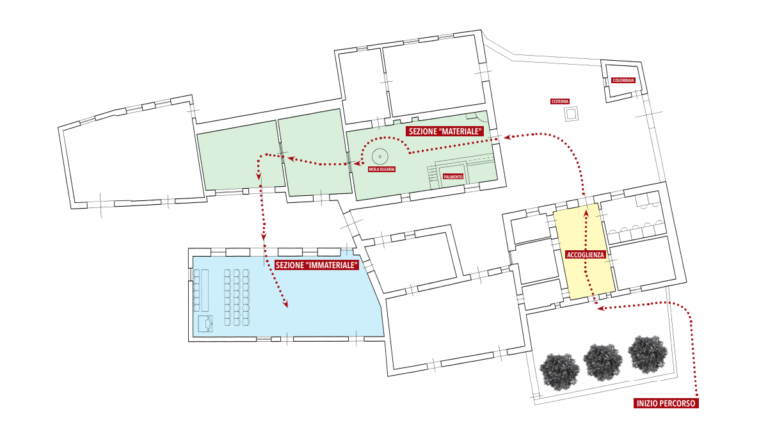
The exhibition route
The exhibition route, with the two sections “Material” and “Immaterial”, is divided into some rooms of the nineteenth-century farmhouse now repurposed as the “Falcone – Borsellino” youth cultural centre. After reaching the internal courtyard, where it is possible to see a dovecote and the cistern which served as a source of water supply, it is possible to access the three rooms adjacent to each other: the winery/oil mill, the adjoining room and the small covered portico, in which the “Materiale” (tangible) section is set up.
The largest room was once used for the first stages of wine production; in fact, the tanks of the millstone and the oil millstone, consisting of the two basaltic stone grindstones used for olive oil production, are still visible (entering on the left), in good condition.
Along the entire left wall there is a collection of tools and utensils relating to the various agricultural works carried out between the nineteenth and twentieth centuries in the Avolese area. The key to understanding the entire exhibition, which concerns the harvesting and processing of wheat, almonds and grapes, are the studies carried out by Giuseppe Bianca, a scholar and botanist from Avola who lived in the nineteenth century. In the room it is possible to see the revival of a glimpse of the factory where the almonds were shelled, in fact here on display are the table used, especially by women, to shell the almonds, the scale for weighing the bags, the calipers and the scales. The processing of almonds was not only a subsistence job for the single family that owned a few almond trees, but especially after the Second World War, the almond trade became a profitable activity, also developed in an entrepreneurial form.
On the right side of the room, after the millstone, you can see machinery used for shelling almonds (the example of an eight spoon patented by the CATOEF company) and the “bassina” for the production of the prized sugared almonds.
The visit to the exhibition continues in the adjacent room, this environment presents elements and tools typical of the house of a family in the last century, which lived from activities linked to agricultural production: tools used for bread-making, cannizzu (cylindrical container made of braided reeds and used to store grain), small looms for embroidery, various containers, a barrel for the domestic consumption of wine. This smaller room communicates with a porticoed area with arches, which leads to the outside.
In this space there is a machine used to calibrate almonds, and a large press for pressing the pomace.
The exhibition itinerary continues in the room in front of the portico, where the “Immateriale” (Intangible) section is located. The room hosts a photographic exhibition on the historic Avolese Carnival, now in its 60th edition in 2023, and on the three religious festivities most deeply felt by the Avolese community: Holy Week, S. Sebastiano and S. Venera.
Each photograph, referable to the processions of the early twentieth century or to the celebrations of the current year (2023), wants to tell and reveal how each anniversary, with its rites and sacral elements, generated by a union of Christian and pagan beliefs, is the result of a continuous evolution dictated by historical events, social changes and economic factors specific to the city community.

